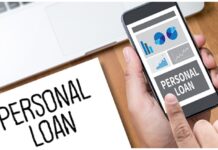Consumer financing refers to the various financial tools and services that allow individuals (consumers) to purchase goods and services by borrowing money or obtaining credit. This enables people to acquire products or services even when they may not have the full amount to pay upfront, and they can pay it back over time, often with interest.
Here’s an overview of the key elements of consumer financing:
1. Types of Consumer Financing
- Credit Cards: Consumers can make purchases using credit cards and pay off the balance over time, typically with interest.
- Personal Loans: Banks and other financial institutions provide loans that consumers can use for various purposes, such as home improvements, weddings, or medical expenses.
- Installment Loans: Offered by retailers or third-party companies to allow consumers to make larger purchases, such as electronics or furniture, by making monthly payments.
- Buy Now, Pay Later (BNPL): A growing form of consumer financing, where consumers can split their purchases into smaller, interest-free payments over a period of time.
- Auto Loans: Loans specifically for the purchase of vehicles, which are repaid in monthly installments.
- Mortgage Loans: Long-term loans for purchasing real estate, paid back over several years or decades.
- Store Financing: Some retailers offer in-house financing, allowing consumers to buy their products and pay them off in installments, often with promotional interest-free periods.
2. How Consumer Financing Works
- Application Process: Consumers usually need to apply for financing by providing information about their income, credit history, and ability to repay.
- Approval and Credit Check: Lenders assess a consumer’s creditworthiness, often through a credit score, to determine the risk involved in lending.
- Loan Terms: Once approved, the lender provides the terms of the financing, including the amount, interest rate, repayment period, and fees.
- Repayment: The consumer repays the loan or credit in installments, typically with interest. The terms of repayment vary depending on the type of financing.
3. Interest Rates and Fees
- Fixed vs. Variable Rates: Some financing options have fixed interest rates (same rate for the entire period), while others may have variable rates that change based on market conditions.
- APR (Annual Percentage Rate): This is the total cost of borrowing, including interest and fees, expressed as an annual percentage.
- Late Fees and Penalties: If consumers miss payments, they may be charged late fees or see increases in their interest rates.
4. Benefits of Consumer Financing
- Affordability: Enables consumers to make large purchases without needing the full amount upfront.
- Convenience: Quick access to credit allows for immediate purchases or covering emergencies.
- Building Credit: Proper use of consumer financing can help individuals build or improve their credit scores.
5. Risks and Considerations
- Debt Accumulation: Over-reliance on consumer financing can lead to excessive debt.
- Interest Costs: The cost of financing, especially with high-interest loans, can significantly increase the price of the product or service over time.
- Credit Score Impact: Missing payments or taking on too much credit can negatively affect a consumer’s credit score.
6. Consumer Protection
- Various laws, such as the Truth in Lending Act (TILA) and the Fair Credit Billing Act (FCBA), protect consumers from unfair lending practices, requiring lenders to disclose the full terms of financing and preventing abusive behavior like deceptive fees.
Consumer financing plays a crucial role in modern economies by increasing consumer purchasing power, but it’s essential for consumers to be aware of the costs and manage their credit responsibly.























